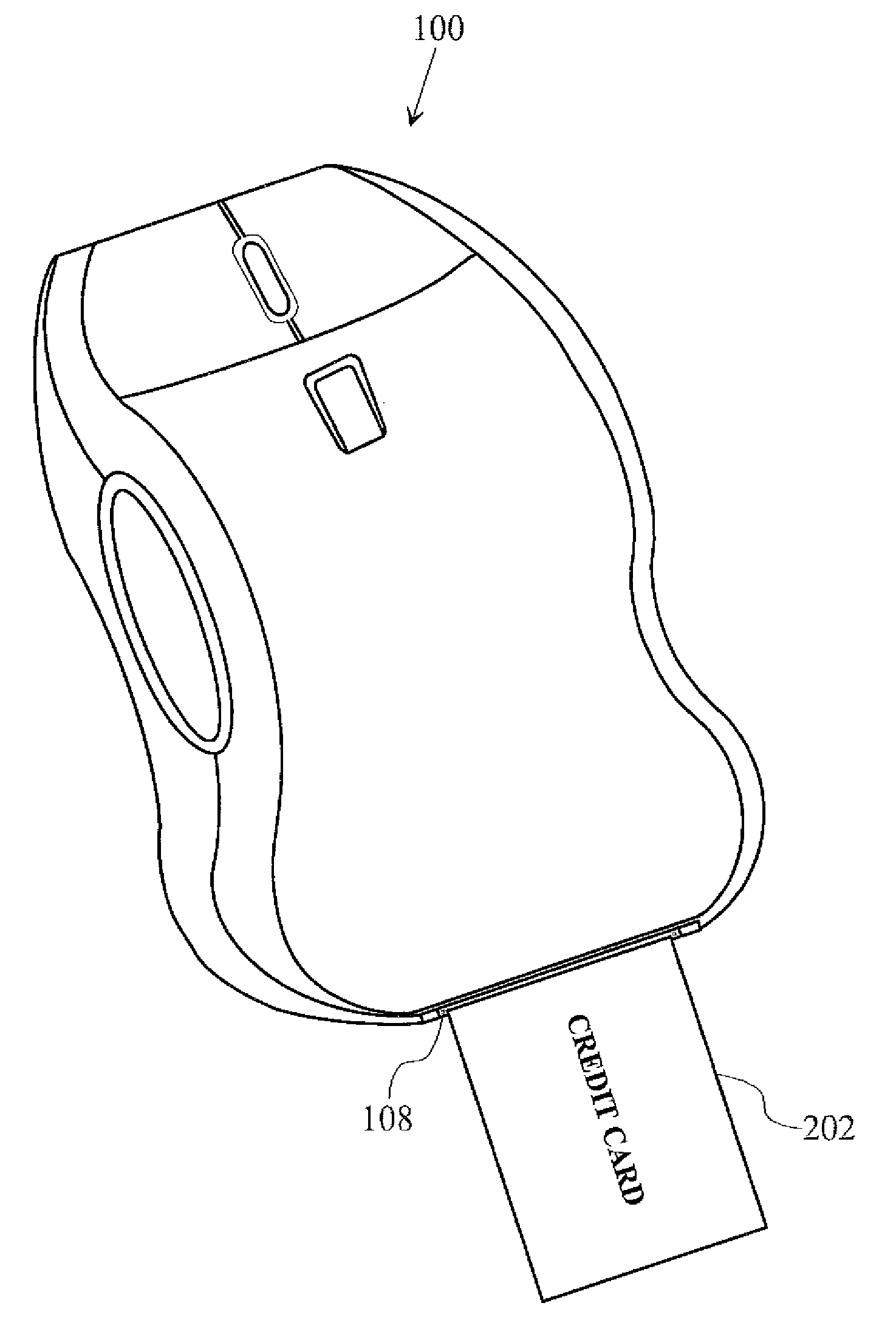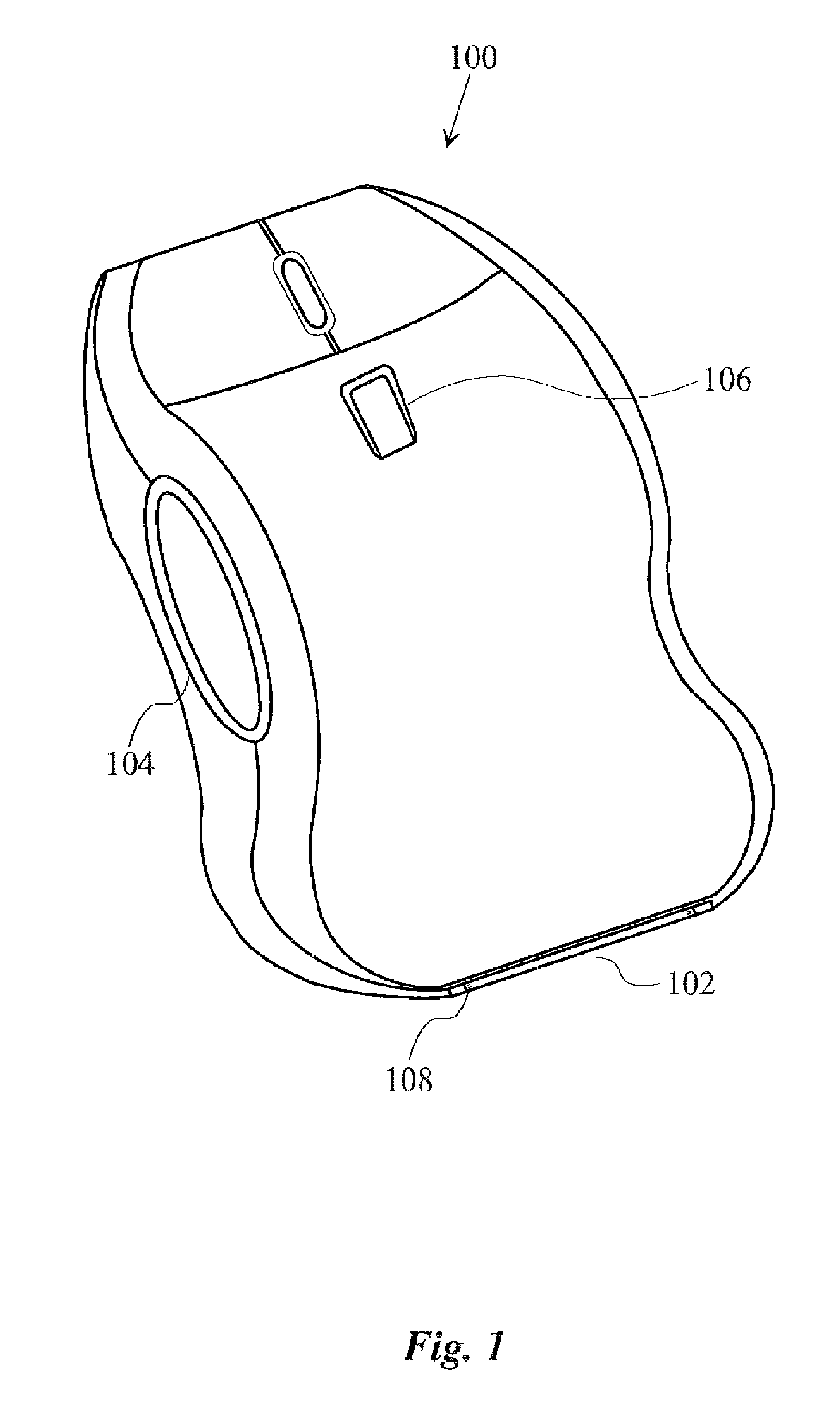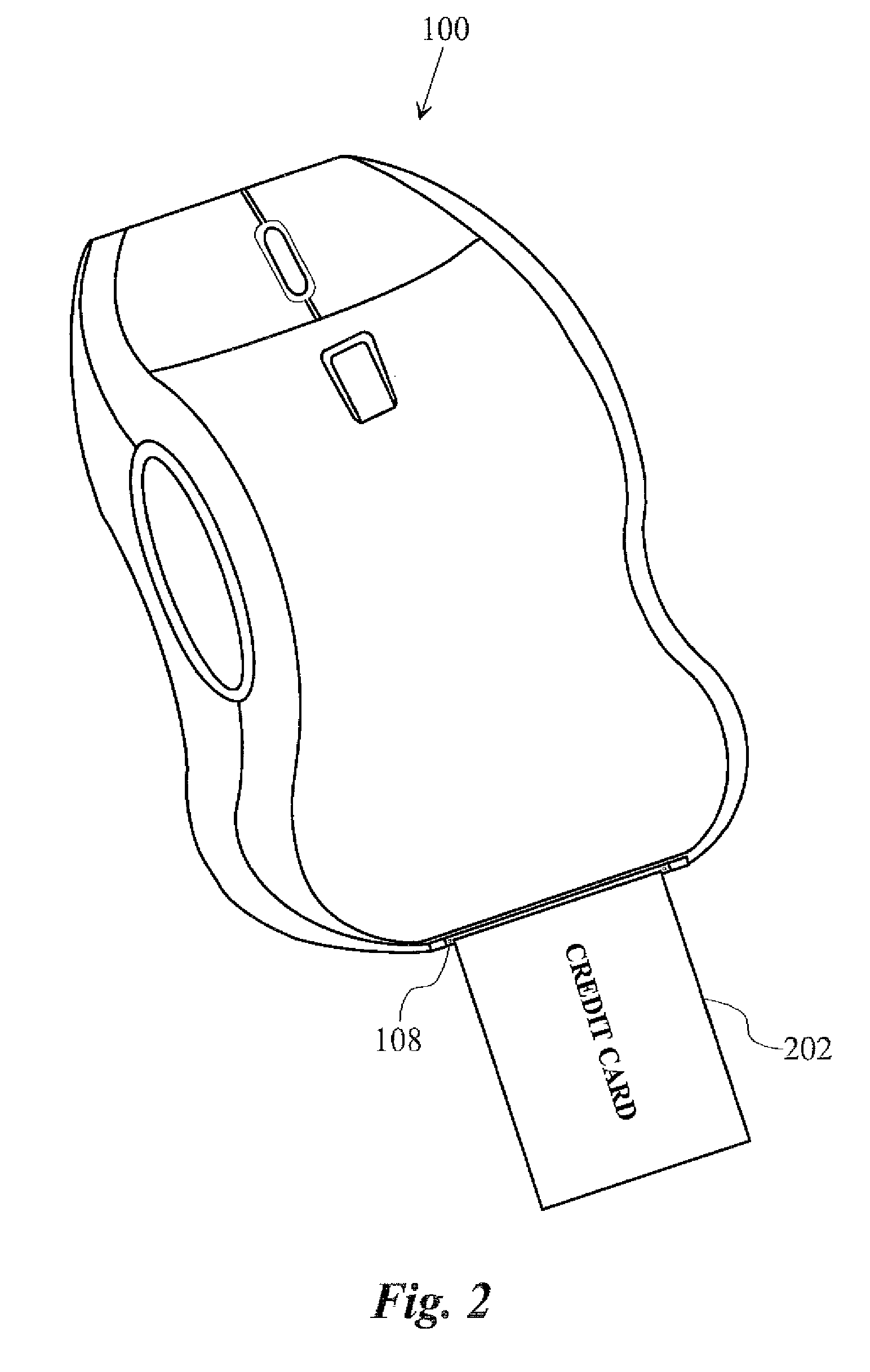Wireless Biometric Computer Mouse with Integrated Credit Card Reader
- Summary
- Abstract
- Description
- Claims
- Application Information
AI Technical Summary
Benefits of technology
Problems solved by technology
Method used
Image
Examples
Embodiment Construction
[0032]The inventors provide a data input system that can be used to read credit card data authenticate the data to a user and facilitate form filling of the credit card data into a Web form without manual typing. The invention is described in enabling detail in examples presented below, which may represent more than one embodiment of the invention.
[0033]FIG. 1 is a top perspective view of a wireless biometric computer mouse 100 with an integrated card reader according to one embodiment of the present invention. As shown in FIG. 1, wireless biometric computer mouse 100 is provided with a credit card reader having a card insert slot 102 strategically located at the base of mouse 100 to receive a credit card. Mouse 100 is wireless and communicates with a host computing appliance using a wireless protocol, however wireless communication between mouse 100 and a computing appliance should not be viewed as a limitation of the present invention. Mouse 100 may communicate with a host using a...
PUM
 Login to View More
Login to View More Abstract
Description
Claims
Application Information
 Login to View More
Login to View More - R&D
- Intellectual Property
- Life Sciences
- Materials
- Tech Scout
- Unparalleled Data Quality
- Higher Quality Content
- 60% Fewer Hallucinations
Browse by: Latest US Patents, China's latest patents, Technical Efficacy Thesaurus, Application Domain, Technology Topic, Popular Technical Reports.
© 2025 PatSnap. All rights reserved.Legal|Privacy policy|Modern Slavery Act Transparency Statement|Sitemap|About US| Contact US: help@patsnap.com



